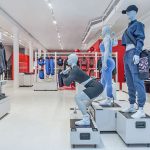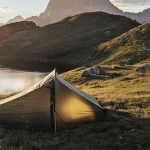Ten years ago, Keen rep Jim Kelly went to four or five trade shows a year. This year, he expects to attend 14. As a result, he could not begin making store visits until late February, after some of his vendors pre-season deadlines had already passed. And even then, he is selecting which stores he visits very carefully.
“Its a juggling act with us,” Kelly says. “We have to pick and choose. Its not always about the money. Its about building the brand. A small retailer in a resort gateway might be able to do more for a brand than a big store in a city.”
Kellys world, like that of most manufacturer reps, is changing. As other retail channels pick up outdoor brands such as Keen and Mountain Khaki, reps are stretched thinner and thinner. With gas prices rising and thousands of square miles and hundreds of retailers to call on, reps are scrutinizing their schedules like never before. Vendors, meanwhile, are demanding more: more professionalism, more data and more consulting.
“It really is getting hard to get in touch with a lot of [reps],” says Jeff Katz, owner of Peak Sports in Corvallis, OR.
The good news is that growing demands have forced many companies to hire field tech reps, as well as full-time office staff to run in-store clinics and enter and monitor dealer orders. This could potentially free reps up to focus on more strategic issues.
According to many reps, retailers may need to change the way they do business to get the most out of their rep in this environment. In return, reps stand ready to elevate their role to that of consultant who can help independent retailers compete against larger players such as EMS, Backcountry.com and REI.
Telling reps exactly what is needed is one of the first steps a retailer should take, according to Bob Wade, owner of Ute Mountaineer in Aspen.
For instance, Wade has told reps for his less-important lines that he no longer needs their help with clinics. Hed rather they spend their time and energy advocating for the store when it incurs shipping or quality control issues with a vendor.
However, Wade understands the relationship is a two-way street. Over the years, he has put a lot of time into brand-building events, including a half-marathon created almost 30 years ago.
“For many years, reps probably said, Look, here they come again, hat in hand, to get some free product for their event,” Wade recounts. “But over the years, reps have figured out that, Wow! This does push product. It means that Ute cares about it and its worthwhile being a partner with them.”
Such loyalty plays an important role in strengthening the rep-retailer relationship, suggests Michael Tebrich of Alpert-Tebrich & Associates of Santa Ana, CA.
“If a brand is successful in a store, the store should be willing to give you the opportunity to expand out and test the waters in new categories,” says Tebrich, whose agency reps SmartWool, Keen, Tilley and Kombi. “That is the way to build loyalty and a solid partnership between the retailer and the representative.”
Another important step retailers can take is to meet pre-season order deadlines. Kelly notes that he will often meet with buyers at multiple shows and still have to chase them down weeks afterwards to get their orders. That can mean driving five or six hours each way for something that should be handled by telephone, e-mail or online.
If a rep is not making a retailers voice heard, the retailer should consider establishing a direct relationship with vendors, contends Paul Marsh of RoadDogs Ltd, in Locust Grove, GA. The agency represents Chaco, Marmot and the APF Power Sox division of GoldToe/Moretz. A direct line to the vendor is increasingly important as the number of managers with meaningful retail experience declines among outdoor vendors, says Marsh.
This is particularly important in the East, which has a higher ratio of independent outdoor retailers. Many outdoor vendors are based in the West and are more accustomed to dealing with larger chains like REI, Adventure 16 and Sport Chalet. That means some vendors are less attuned to the realities faced by independent retailers, who are much more vulnerable to the vagaries of weather.
To overcome the “out of sight, out of mind” dynamic, Marsh recommends retailers attend at least one trade show a year or schedule on-site visits with vendors. At these meetings, retailers should:
Be prepared to talk about what they are doing to promote the vendors brand in terms of in-store merchandising, events and promotions. Bring photographs to document the work.
Educate vendors about your business and market. Explain how a late winter or spring affects you. If a vendors pre-season programs dont work for you, explain why.
Be prepared to suggest a solution that works for all parties.
Meet face-to-face with the people you talk to every week. Follow up once a year by sending that key employee in dealer relations a local delicacy for the holidays.
“Youve got to become as personable with vendors as you are with customers,” notes Marsh.
The upside to all this is that reps are positioning themselves better to act as business consultants, says Rion Smith of Outdoor Sports Marketing (OSM), which represents Cascade Designs, SmartWool, Astral, Silverfoot, Aquabound, Western Mountaineering, GoLite, Mion and Osprey in the Southeast.
In a relatively unusual move, OSM has hired employees rather than commission-based independent contractors to run its agency. The companys goal is to build a more professional and sustainable organization that can keep up with the growing demands of vendors and retailers.
“We are trying not to make it about the Nolan Davis and Rion Smith show, but about Outdoor Sports Marketing,” says Smith. “The idea is that anybody at Outdoor Sports Marketing can get you the help you expect.”
Smith believes reps generally do a good job of advising retailers on merchandising, product training and ordering, but they must also be able to help retailers become savvier business people. That might mean helping a retailer partner with a vendor on marketing and promotions, making sure the retailer orders more profitable assortments, and having a better understanding of margins.
This is the type of relationship retailers and their reps should be shooting for, asserts Sarah Trachy, of North Branch Traders in Elverson, PA, which represents Bridgedale, Cascade Designs, Garmont, Mountainsmith and PolarMax.
“Very few people go into outdoor retailing because they think they are going to make a lot of money at it,” says Trachy. “They got into it because they are passionate about a particular sport. So we can be an information source for them about how to streamline their business and improve their bottom line. With our experience with a broad variety of retailers, we can tell them about things that work. We can offer merchandising. We can suggest programs and computerization. We want our agency to be viewed as a resource this way.”















